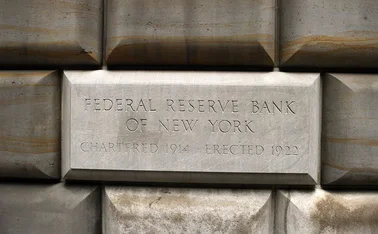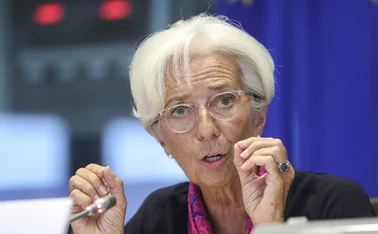
Case study: The China-Pakistan Economic Corridor
Habib Bank CEO on why countries such as Pakistan stand to benefit from Chinese investment

The role of infrastructure development and financing has traditionally been state owned or sponsored, but this is changing. As the largest financial institution in Pakistan, we believe Habib Bank has a responsibility to participate in infrastructure development and we are keen to work alongside other domestic and international institutions in ensuring projects meet local needs.
The creation of new development financial institutions like the Asian Infrastructure Investment Bank (AIIB), New Development Bank (Brics Bank) and Silk Road Fund heralds the advent of a new era. We expect these institutions to play a key role in boosting development and hence, sustainable growth, in emerging and low income countries. With their formation, there will be more collective funding available from new and old Bretton Woods institutions. There may be more competition for financing infrastructure, which could create an opportunity for the borrowers to access relatively low cost capital for longer tenures.
 Nauman K Dar
Nauman K Dar
President Xi Jinping's One Belt, One Road policy should be tailored to the different environments it involves, making it more inclusive. This will help achieve diversity and economic wellbeing at the grassroots level, which is necessary to curb extremism and promote harmony and peace.
China-Pakistan Economic Corridor
One initiative is the China-Pakistan Economic Corridor (CPEC), announced in mid-2013 during prime minister Li Keqiang's visit to Pakistan, which had gained significant momentum by the time president Xi visited in 2015. This is a $46 billion infrastructure plan, based on the requirements of the Pakistan economy.
The CPEC covers the immediate need for building power-generation plants and transmission lines, constructing highways and subways, and improving railway infrastructure. It also addresses the medium-term needs of the economy, by developing port city infrastructure, constructing hydropower plants and investing in social infrastructure by building schools, universities and medical facilities.
Since 2010, Pakistan's annual GDP growth has dropped to an average of 2-3%, from 6% in the preceding five years. This appears to be a result of multiple factors, including the impact of the financial crisis and slowdown in the global economy on Pakistan's major exports of textile products. However, on closer scrutiny, a question arises: why were some developing counties able to attain higher growth, while Pakistan lagged? The answer is simple: it did not invest in infrastructure. From 2004 onwards, investment in energy and energy-related infrastructure fell, leading to shortages, with consequences for household consumption. The direct and indirect costs for growth were estimated by some experts to be in the range of 2-3% a year.
What would the country require to break this vicious circle? Additional power generation of 5,000 megawatt in three years and another 8,000 megawatt in eight years; infrastructure to transmit power; dedicated areas like industrial parks; and the provision of natural gas, to name a few things.
Chinese knowledge, expertise, technology and experience are being utilised and it will be financed by Chinese, international and Pakistani financial institutions
Nauman K Dar, Habib Bank
The CPEC is designed to provide this infrastructure, in support of the current and future economic needs of Pakistan. Chinese knowledge, expertise, technology and experience are being utilised, while the massive investment will be financed by Chinese financial institutions – both commercial and developmental, new and old – alongside both international and Pakistani financial institutions.
Connecting investors
Habib Bank is working very closely with two leading Chinese banks, ICBC and CDB, on various aspects of projects such as providing financial advisory services, arranging debt and equity from China and Pakistan, and connecting investors. For example, CDB, ICBC and Habib Bank are working on the execution of the first coal mine and power plant in Pakistan, which is being set up at the cost of $2 billion. We will also work together on the financing of a 900km transmission line – a project we are jointly advising on.
Separately, Habib Bank is taking a leading role in providing and arranging the the domestic portion of the financing, and other projects that do not have a Chinese element. Nonetheless, the scale and size of the CPEC initiative is beyond the capacity of the Pakistani banking sector. The Silk Road Fund has committed investment in two projects in Pakistan, and is reportedly considering others. The AIIB will hopefully also play a key role in project financing in Pakistan.
Energy mix
International institutions can also play a critical role in helping Pakistan balance its energy mix. Pakistan is an economy with GDP in excess of $280 billion, a population of 180 million people and a minimum power shortage of 5,000 megawatt. At the same time, it is the only economy in the world of this size with no power generation from coal. Yet the Bretton Woods institutions shy away from coal projects while promoting financing of renewables like wind and solar. This is despite the fact good practices and technology can be deployed to reduce carbon content to acceptable levels.
Meanwhile, the cost of producing power from alternate energy sources is much more than coal. The Chinese banks and Silk Road Fund are adopting a practical and pragmatic approach to financing projects, which considers the development needs of the recipient country. This will be one of the defining themes of how the new international institutions will contribute and challenge the established norms of the old.
Finally, we hope lower risk weights for infrastructure financing can be included in Basel III, enabling commercial banks to play their role without excessively drying up capital.
Only users who have a paid subscription or are part of a corporate subscription are able to print or copy content.
To access these options, along with all other subscription benefits, please contact info@centralbanking.com or view our subscription options here: subscriptions.centralbanking.com/subscribe
You are currently unable to print this content. Please contact info@centralbanking.com to find out more.
You are currently unable to copy this content. Please contact info@centralbanking.com to find out more.
Copyright Infopro Digital Limited. All rights reserved.
As outlined in our terms and conditions, https://www.infopro-digital.com/terms-and-conditions/subscriptions/ (point 2.4), printing is limited to a single copy.
If you would like to purchase additional rights please email info@centralbanking.com test test test
Copyright Infopro Digital Limited. All rights reserved.
You may share this content using our article tools. As outlined in our terms and conditions, https://www.infopro-digital.com/terms-and-conditions/subscriptions/ (clause 2.4), an Authorised User may only make one copy of the materials for their own personal use. You must also comply with the restrictions in clause 2.5.
If you would like to purchase additional rights please email info@centralbanking.com test test test








